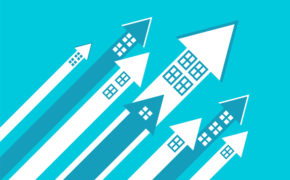Fixed Rate vs. Adjustable Rate Mortgages
When you make the decision to finance the purchase of a new home, you will undoubtedly be asked if you are interested in a fixed-rate or adjustable-rate mortgage. While I can’t possibly answer that for you here, I can explain what they are and some factors that might influence your decision.
What is a fixed-rate mortgage?
A fixed-rate mortgage is just that, a mortgage with a fixed interest rate. It provides peace of mind for the borrower and a stable payment structure. No matter what happens to interest rates, the economy or home values, the principal and interest payments will always stay the same over the life of the loan, be it 15, 20 or 30 years. The payments are calculated based upon an amortization table, and each payment is applied partially to interest and partially to principal.
What is an adjustable-rate mortgage?
An adjustable-rate mortgage (ARM) is designed to have an interest rate that adjusts based upon a specific index. The index of your mortgage can vary and is important to understand, as it will have long-term implications on your payment structure. If your payments are tied to a very stable index–say COFI (Cost of Funds Index)–then your payments will remain more stable and changing rates will be less likely to have a dramatic effect on your monthly mortgage payment. If your payments are tied to a more volatile index–say LIBOR– your monthly payments are quickly subject to change when interest rates change.
The adjustable-rate margin
The second component to an ARM is the margin. This is the number of percentage points added to, or subtracted from, an index to determine your interest rate. For example, if your payment is tied to LIBOR, and you have a margin of two, you would calculate your payment by adding two percent to the current LIBOR rate. No matter how high or low LIBOR goes, your rate will always be two plus LIBOR, unless you have an interest rate floor or ceiling. Floor and ceiling rates set minimum and maximum interest rates, and supersede the index plus rate formula.
What is an option ARM?
No discussion of interest rates and mortgages is complete without discussing Option ARMs. These loans were extremely popular for a long time and fell out of favor when the housing market crashed. In truth, these loans can be great for the right borrower, but they can also be dangerous for the wrong borrower. The reason for this is the “option” it gives homebuyers. With Option ARMs, you usually have three loan payment options: fully amortizing loan (principal and interest), interest-only loan or negatively amortizing loan.
With the interest-only option, it will be hard to pay down your mortgage note, and with the negatively amortizing loan, you actually add principal balance to your loan note. For people who work seasonally or largely on commission, these options can be appealing because they keep payments down in lean months. But if you aren’t careful, it can also lead to a loan that does not get paid off. It’s always best to discuss the specifics of your financial situation with your loan officer so they can help you choose a loan that’s right for you and is in your best interest.
So, what’s best for me?
So, the million dollar question becomes: which option is best for me? The answer is, it really depends upon a number of other factors, including what your salary structure is, when you want to pay off your mortgage and how comfortable you are with the “risks” associated with an adjustable-rate mortgage.
If you are serious about buying a house and want to figure out how a fixed-rate or adjustable-rate mortgage will affect your finances, send us a message. We’d love to help you figure out which option is best for you!










